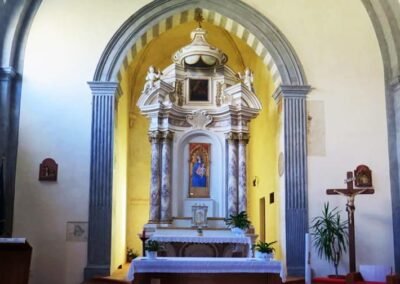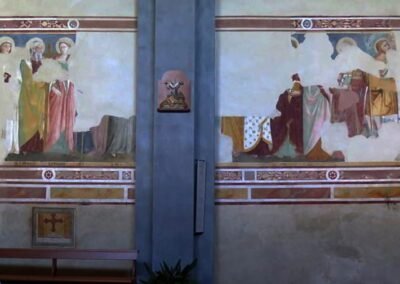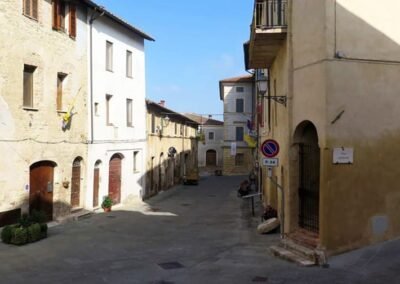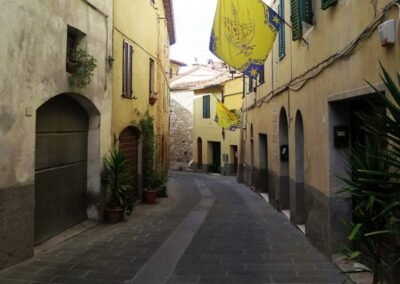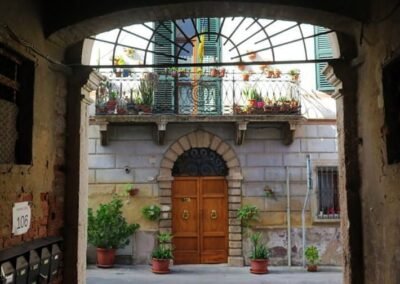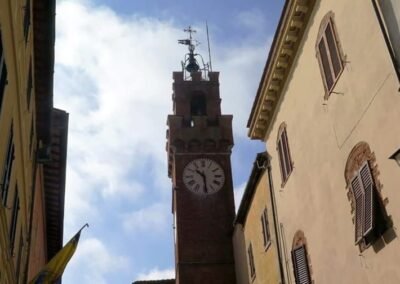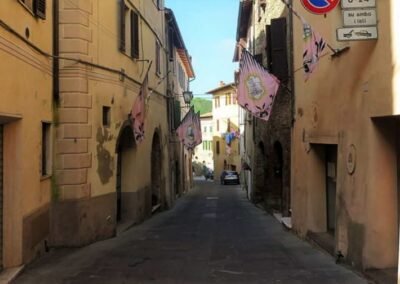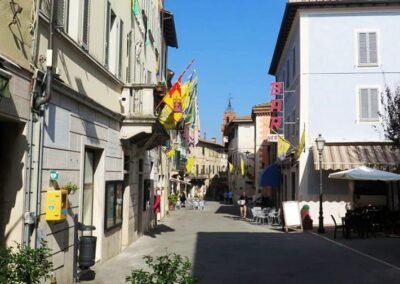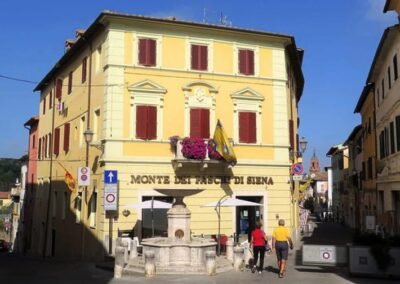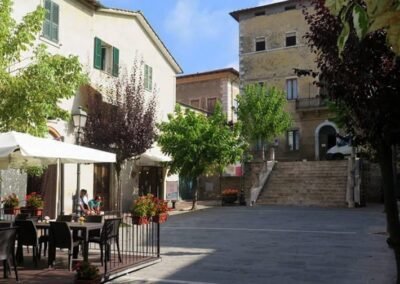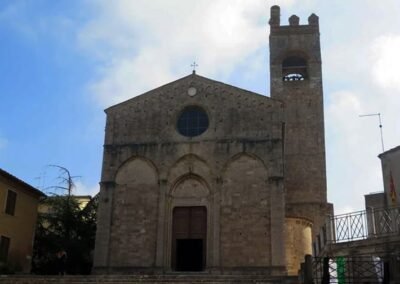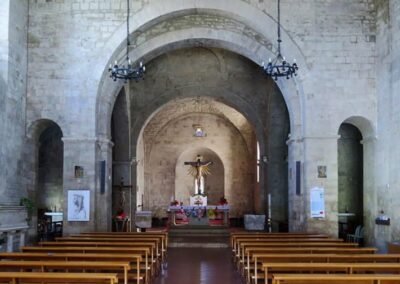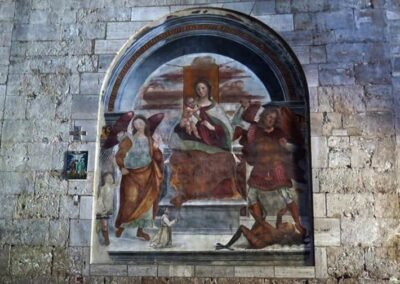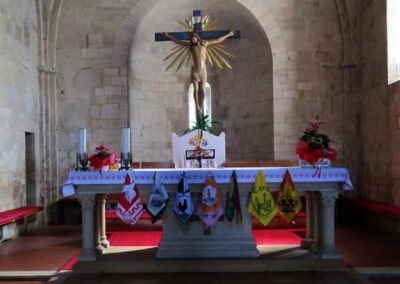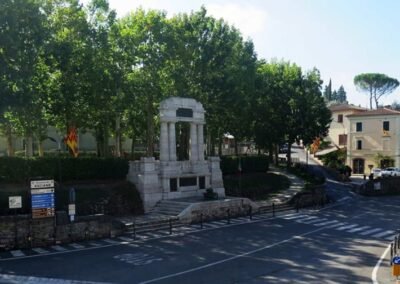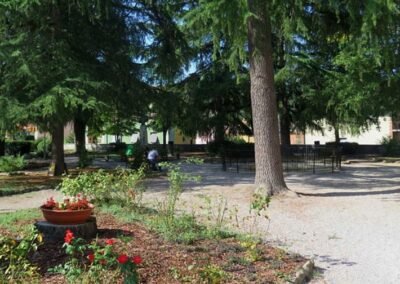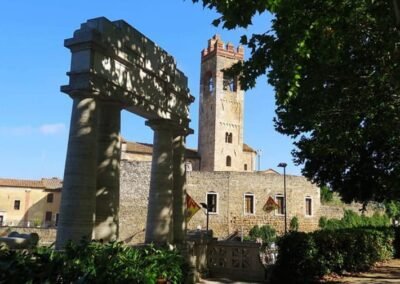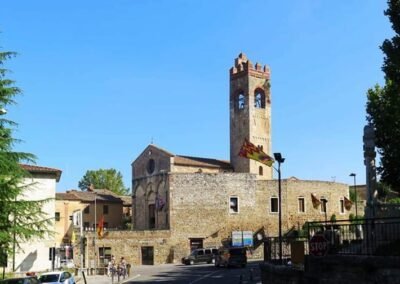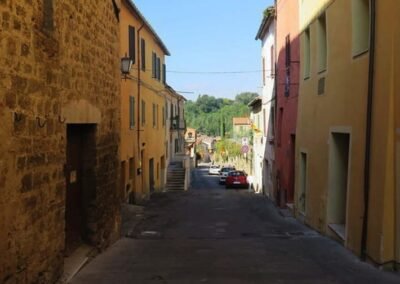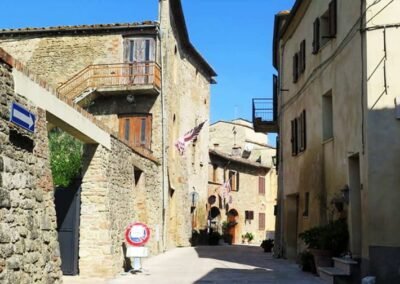HOME
THE REGIONS OF ITALY
PLACES IN ITALY
Italy in Photos
Corso Giacomo Matteotti, 53041 Asciano, Italy (September 2018)
Asciano
Asciano, a charming town in the heart of Tuscany, lies nestled in the rolling hills of the Crete Senesi, a distinctive landscape known for its clay-coloured earth, gentle slopes, and panoramic beauty. Located about twenty five kilometres southeast of Siena, Asciano offers a peaceful retreat into rural Tuscany, where history, art, and nature intertwine in perfect harmony. Though small in size, the town has a deep and fascinating past that reflects the broader cultural and artistic heritage of the region. It is a place where time seems to slow down, inviting visitors to explore its narrow streets, admire its ancient buildings, and experience authentic Tuscan life.
The origins of Asciano date back to Etruscan and Roman times, as evidenced by archaeological finds discovered in the surrounding countryside. During the Middle Ages, the town flourished under the influence of Siena and became an important agricultural and strategic centre. Its medieval layout, still visible today, features well-preserved stone houses, defensive walls, and narrow lanes that lead to picturesque squares. Walking through Asciano, one can sense the centuries of history that have shaped its character and charm.
Among the town’s most remarkable landmarks is the Collegiate Church of Sant’Agata, an elegant Romanesque building that dominates the historic centre. Inside, visitors can admire precious artworks, including frescoes and sculptures from the Sienese school. Another highlight is the Museo d’Arte Sacra, which houses an impressive collection of religious art, paintings, and artifacts that reflect the town’s rich artistic tradition. Outside the walls, the Abbey of Monte Oliveto Maggiore stands as one of the most significant monastic complexes in Tuscany. Surrounded by cypress trees and rolling hills, the abbey is famous for its beautiful cloister decorated with Renaissance frescoes by Luca Signorelli and Sodoma.
Beyond its historical and artistic treasures, Asciano offers a deep connection to the Tuscan landscape. The surrounding Crete Senesi region, with its winding roads, isolated farmhouses, and ever-changing colours, provides some of the most iconic scenery in Italy. Visitors can enjoy walking, cycling, or simply pausing to take in the peaceful views that have inspired artists and travellers for centuries. With its welcoming atmosphere, delicious local cuisine, and timeless beauty, Asciano embodies the true spirit of Tuscany, offering an experience that is both tranquil and unforgettable.
Worth a Visit
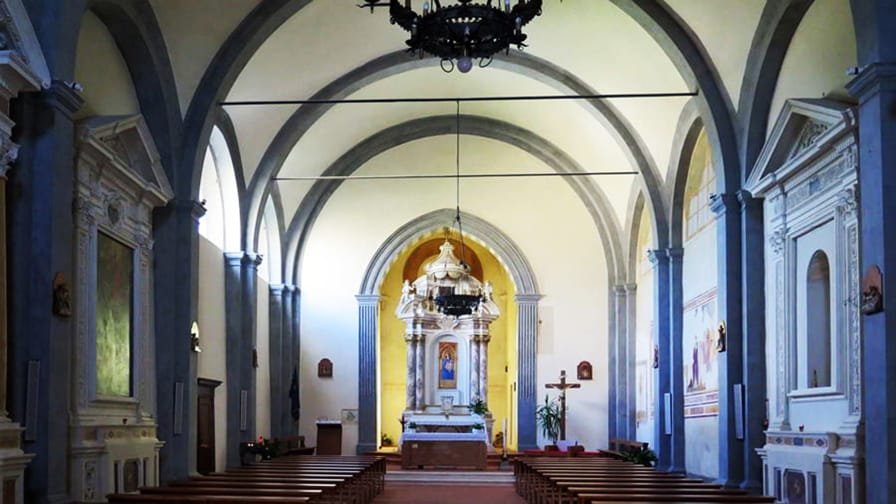
The Chiesa di Sant’Agostino in Asciano, Tuscany, is a compelling blend of medieval origins, Renaissance enlargement, and Baroque interior elegance—nestled on Corso Matteotti along a historic route toward Siena. Originally constructed in the 12th or 13th century, the church once stood alongside an Augustinian convent. It was later expanded in the mid-15th century, funded by the prominent Scotti family. A date marking 1472 is inscribed on a brick near the portal, commemorating this phase. The church retains its traditional single-nave layout even after later modifications, and its façade reflects a modest yet dignified gothic‑Romanesque brick style.
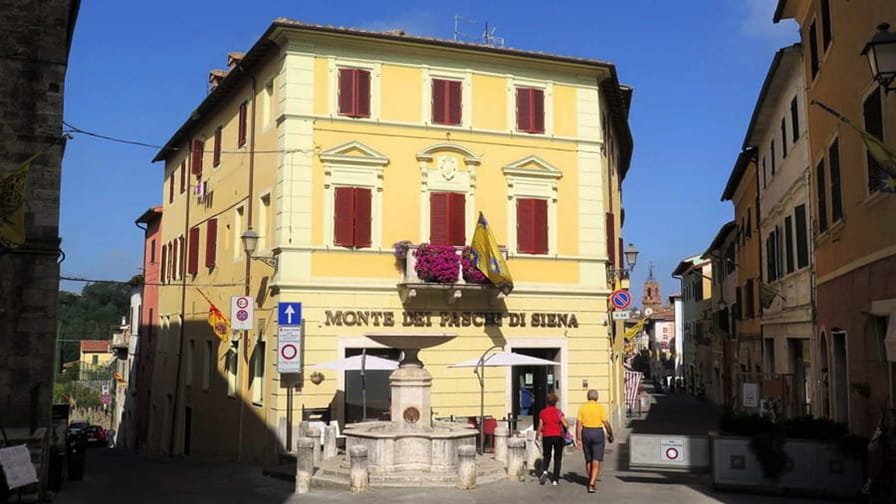
Corso Giacomo Matteotti is the vibrant main thoroughfare of Asciano, weaving through its historic centre and serving as both physical heartbeat and cultural spine of the town. Stretching from the ancient Porta Senese (also known as Porta Bianchi) to Piazza del Grano, this elegant street is lined with centuries‑old buildings, landmarks, cafés, shops, and heritage sites, making it a compelling introduction to Asciano’s rich past and lively present. Corso Matteotti traces the line of the historic Via Lauretana, an old pilgrimage and trade route connecting Cortona to Siena. Introduced in its current structure during the Napoleonic era, the street was designed to harmonize medieval patterns with later civic planning. Along this axis, Asciano’s medieval identity emerges through brick façades, narrow alleys, and noble towers, all testament to its storied evolution.
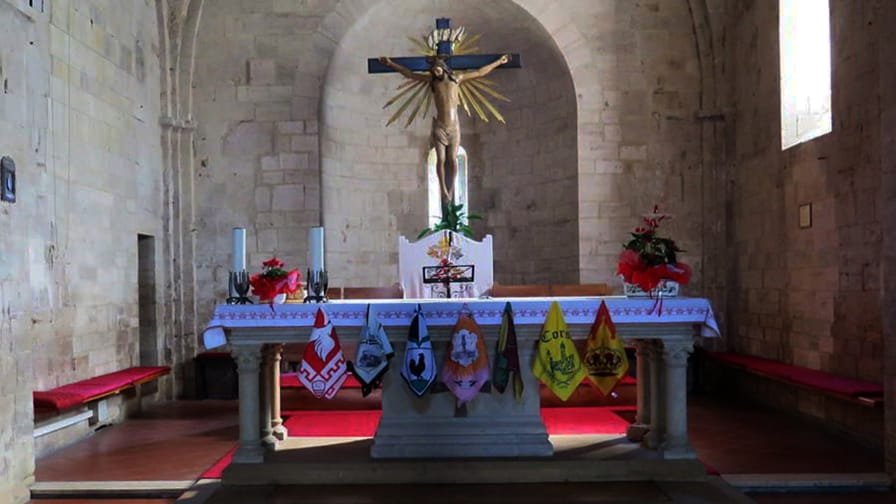
The Basilica di Sant’Agata in Asciano, Tuscany, is a luminous testament to nearly a thousand years of religious, artistic, and architectural heritage. Originally referenced in documents from 1029 and 1040, this church inherited the ancient baptismal function from the older Pieve di Sant’Ippolito, becoming Asciano’s principal parish church and later elevated to a minor basilica in 1991. Built in a transitional Romanesque‑Gothic style, the basilica adopts a Latin‑cross floor plan crowned by a hemispherical dome set within an octagonal lantern—an elegant feature rising at the intersection of transept and nave. The façade presents three blind ogival arches, leaf‑carved capitals, and a central rose window—all tell-tale marks of late medieval sophistication.
Photo Gallery of Walk – Via delle Fonti to Piazza del Grano
Approximately 1.23 km – 0.76 miles
The walk starts in Chiesa di Sant’Agostino, Vicolo San Agostino – Corso Giacomo Matteotti – Piazza della Basilica – Parco delle Rimembranze – Via S. Francesco – return to Piazza della Basilica – Via Bartolenga – Piazza del Grano.
COPYRIGHT © 2018-2025 ITALY IN PHOTOS - ALL RIGHTS RESERVED
